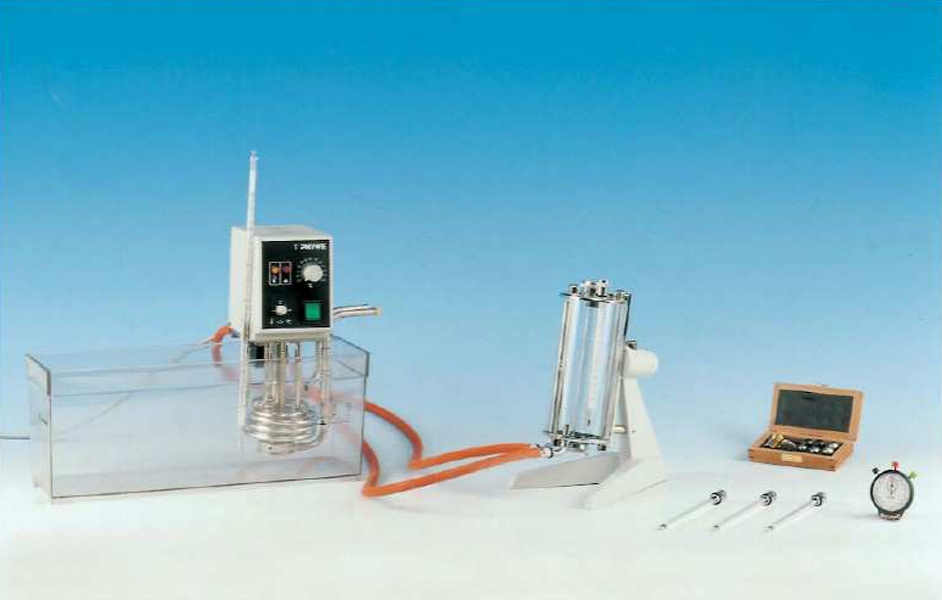Viscosity measurement with the falling ball viscometer

Principle
Due to internal friction among their particles, liquids and gases have different viscosities. The viscosity, a function of the substance’s structure and its temperature, can be experimentally determined, for example, by measuring the rate of fall of a ball in a tube filled with the liquid to be investigated.
Benefits
- Viscosity measurement for two fluids and any mix ratio
- Viscosity measurement for different temperatures possible
- Angle of falling ball viscometer can be changed
- Interdisciplinary use also in applied sciences or physical chemistry
Bath for thermostat, makrolon
Cooling coil for thermostat Alpha A
External circulation set for thermostat Alpha A
Immersion thermostat Alpha A, 230 V
Falling ball viscometer
Thermometer, 24…+ 51 ºC, for Falling ball viscometer
Methanol 500
Water, distilled 5 l
Wash bottle, plastic, 500 ml
Beaker, tall form, 150 ml
Volumetric flask 100 ml, IGJ12/21
Pasteur pipettes, 250 pcs
Retort stand, h = 750 mm
Right angle boss-head clamp
Universal clamp with joint
Rubber caps, 10 pcs
Rubber tubing, i.d. 6 mm
Rubber tubing, i.d. 10 mm
Hose clamp for 5-12 mm diameter
Beaker, 250 ml, low-form
Tubing connector, ID 6-10mm
Precision Balance, Sartorius ENTRIS623-1S, 620 g / 0.001 g
Pycnometer, calibrated, 25 ml
Stopwatch, digital, 1/100 s
Tasks
Measure the viscosity
- of methanol-water mixtures of various composition at a constant temperature,
- of water as a function of temperature and
- of methanol as a function of temperature.
From the temperature dependence of the viscosity, calculate the energy barriers for the displace ability of water and methanol.
What you can learn about
- Liquid
- Newtonian liquid
- Stokes law
- Fluidity
- Dynamic and kinematic viscosity
- Viscosity measurements
